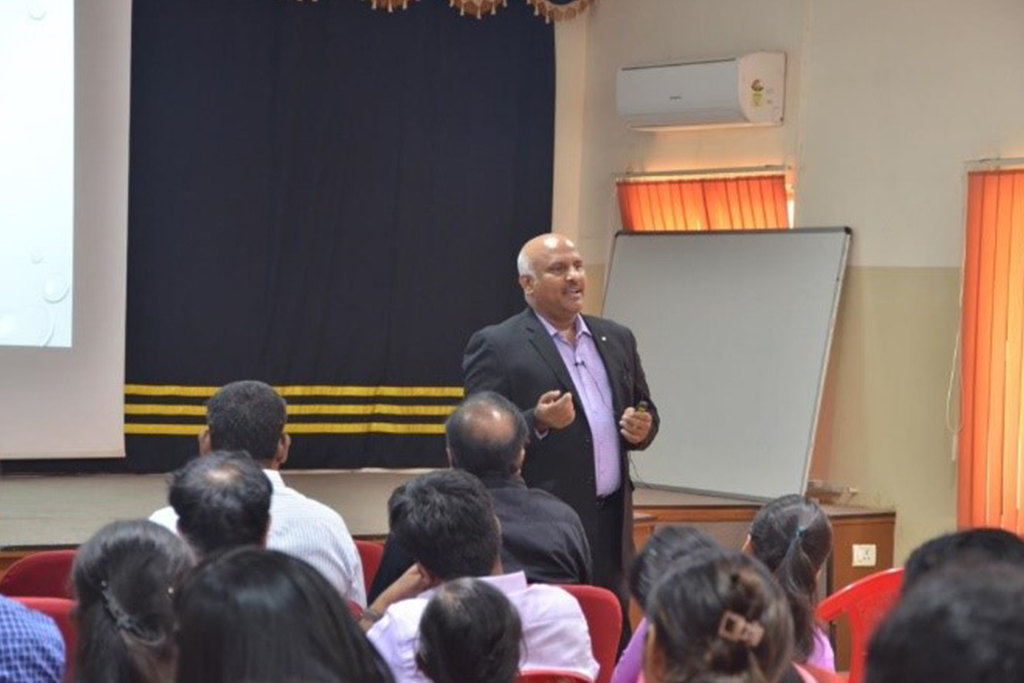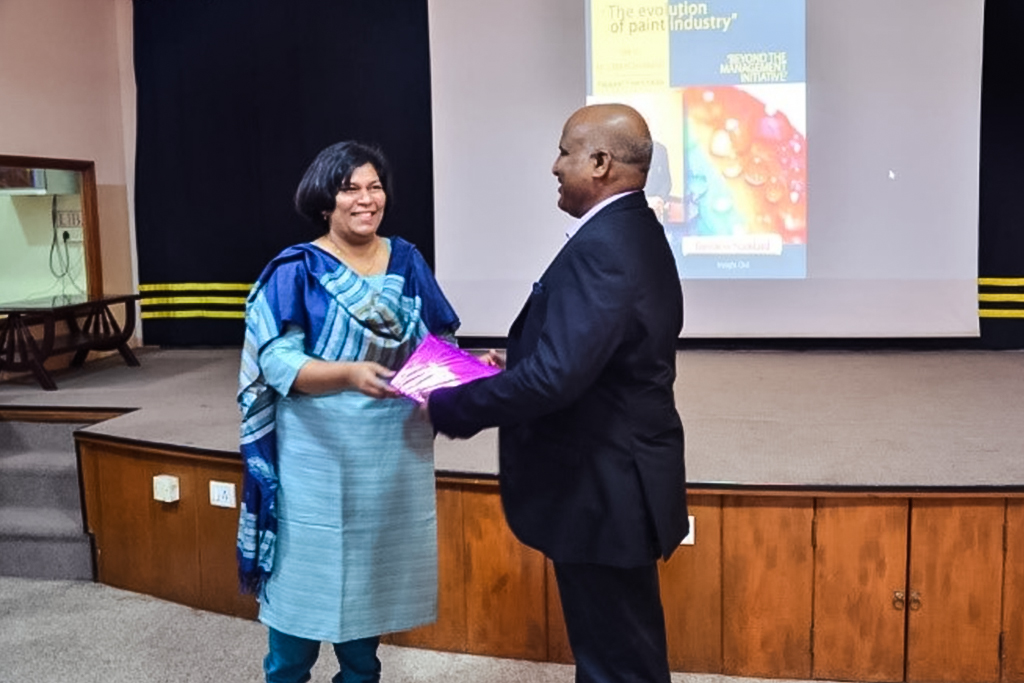
Evolution of the Paint Industry
Mr. S. Mahesh Anand, President – Decoratives, Nippon Paint India
The Beyond Management Initiative session held on 18th July 2018 at LIBA was organised in association with Business Standard. The session hosted Mr. Mahesh Anand, President of the Decorative Paint Division at Nippon Paint India Private Limited. Mr. Mahesh has over 18 years of experience in Channel Sales Management of Paints. His sales journey started when he was 19 with analog typewriters. It soon proved to be tough as electronic typewriters entered the market while the analog typewriters became obsolete. His next big break came in 1991 as he transitioned from the homochromous black and white typewriter industry to the vividly colorful paint industry with Berger Paints where he worked till 2005. He later joined Nippon’s advent in India. He is also the President of the Indian Paint Manufacturers Association.
Mr. Mahesh spoke on the evolution of the paint industry and its impact over the years. A study about five years ago found that an average Indian sees painting only thrice in his entire lifetime. Painting started in the Medieval era to protect wood. Castor Oil was applied over wood. Now, Paint is a mixture of additives, binder, pigment, filler and water. The water component dries, and the rest of ingredients become homogeneous on the surface. During the early 1990’s, the colors used were restricted. The popular moving colors were always stacked for sale but if the customer wanted some new color, he would have to wait for the paint company to manufacture it.
The Paint Revolution came in 1997 with the tinting machine. A base paint which was colorless was manufactured and sent to all the dealers. They are also provided with a wide range of pigments in cannisters. This made it possible for the customer to get any color that they desired just in time. The recipe for more than one lakh colors were available along with the machines and more than 3 lakh tinting machines have been deployed across India.
Now the Paint Industry in India has grown into such a scale that the customer can choose not only the color but also the finish, texture, property, functionality such as reflecting heat rays, Anti-bacterial, rain proofing and lots more. Nippon’s venture into the Indian market started in 2006 and was foremost in bringing retail stores. The odor emitted from paints are often very harmful and they were eliminated by Nippon by using solvent less paints. They also used automated green plants with no pollutant discharge. A mobile app for painters has been introduced where in the painters get points through a loyalty system. For every purchase of paints, the painter can scan the barcode on the side of the can and earn points. Upskilling and Certification of Painters have also been now taken up.
Nippon did however face a fair set of challenges. They had a hard time finding a dominant position Pan India. Hence, they decided to focus all their marketing towards Tamil Nadu. Blobby, a blob of paint that colors the city was introduced as the Brand Ambassador. Blobby has become such a sensation that be it Big Boss or Super Singer, Blobby was seen in several prime time shows. Using this traction gained , they soon plan to expand to the other states as well.
Paints are now classified as “Semi Fast Moving Consumer Goods”, which means it moves every 15 days in the retail segment. The Paint Industry has been poised for greater growth as it aims to make painting a yearly affair at homes. We are moving from the paint can to a painted wall. The critical pain point of painting is the time it takes to complete the deed. Nippon offers to paint one room per day which helps the cause. Indian Paint Market is growing at such an enormous pace that an exemplary number of jobs are created every year. Mr. Mahesh concluded by encouraging the future managers in us to look for viable career opportunities with the Paint industry.
Contributed by : Raeshmi Noel J

